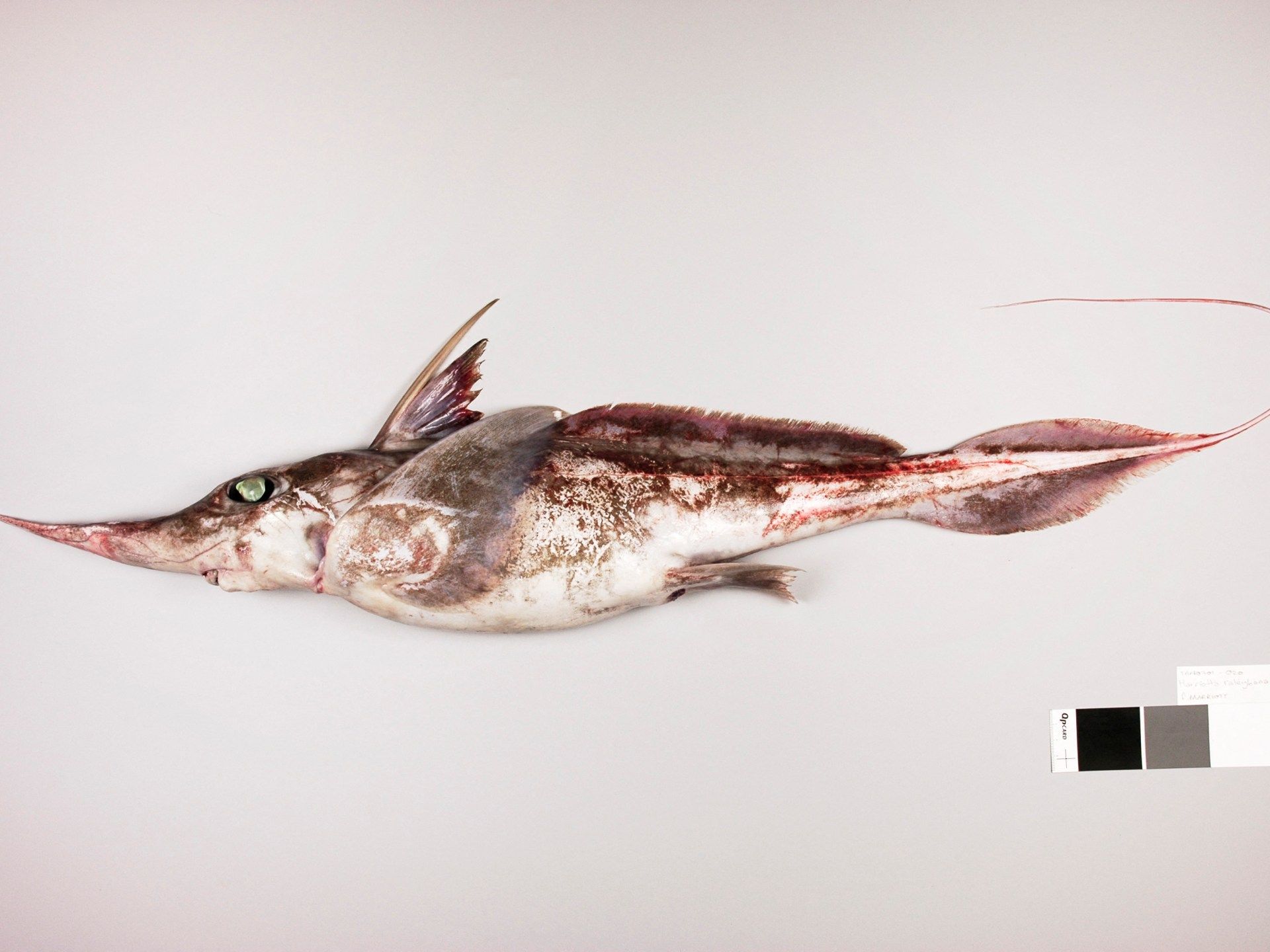The beak-mouthed fish, now called Harriotta avia, lives exclusively in deep waters off Australia and New Zealand.
Scientists in New Zealand have discovered a new species of “ghost shark.”
The Wellington-based National Institute of Water and Atmospheric Research (NIWA) said on Tuesday that the Australasian narrow-nosed ghostfish lives exclusively in the deep waters around Australia and New Zealand.
The fish, which prowls the ocean floor in search of prey more than 2.6 kilometers (1.6 miles) deep, is named after the grandmother of one of the research team members.
Also known as “ghost sharks” or “chimaeras,” ghostfish are related to sharks and rays, but are part of a group of fish whose skeletons are composed entirely of cartilage. Other names for these mysterious animals include ratfish, rabbitfish, and elephantfish.
Ghost sharks have eerie black eyes and smooth, scaleless, light brown skin.
They feed on crustaceans at depths of up to 2,600 metres (8,530 ft) using their distinctive beak-shaped mouth.
“Ghost sharks like this one are largely confined to the ocean floor,” said research scientist Brit Finucci.
The specimens were discovered during research in the Chatham Rise, an area of the Pacific that stretches about 1,000 kilometres (621 miles) east of New Zealand's South Island.
'Grandfathers and grandmothers of fish'
Finucci has given the new species the scientific name “Harriotta avia” in memory of his grandmother.
“Avia means grandmother in Latin. I wanted to give her this recognition because she proudly supported me during my career as a scientist. Chimaeras are also quite ancient relatives – the grandmothers and grandfathers – of fish and I thought the name was very appropriate,” she said.
“Their habitat makes them difficult to study and monitor, meaning we don’t know much about their biology or threat status, but it makes discoveries like this even more exciting.”
The ghostfish was previously thought to be part of a single globally distributed species until scientists discovered that it is genetically and morphologically different from its cousins.
“Harriotta avia is unique for its elongated, narrow, depressed snout; its long, thin trunk; its large eyes; and its very long, wide pectoral fins. It has a beautiful chocolate brown color,” Finucci said.












